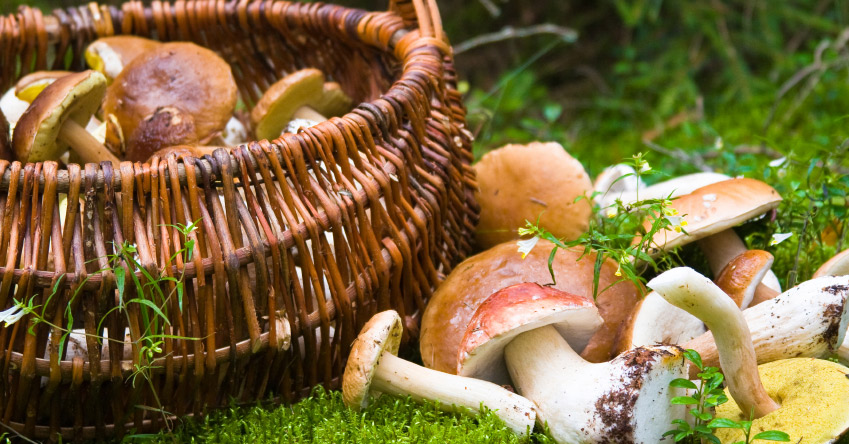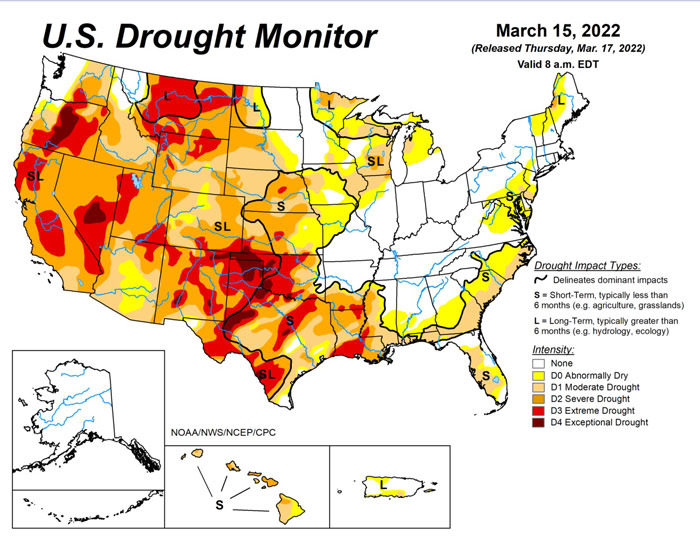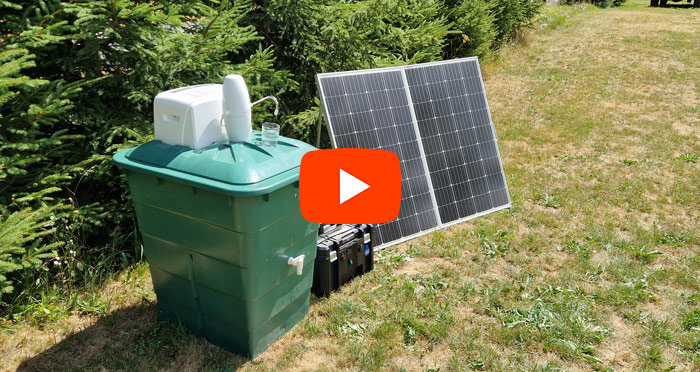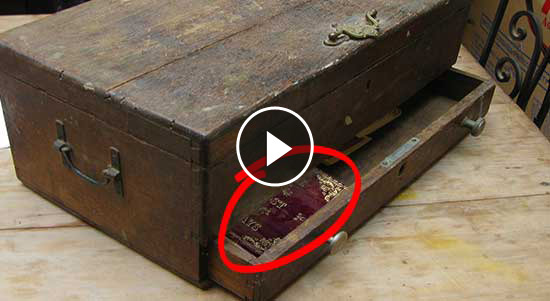Click Here To Join Our Telegram Channel for FREE daily tutorials!

How To Identify Wild Mushrooms
Initiating Mushroom Hunters
Identifying Wild Mushrooms might not seem very exciting – until you know that mushrooms are extraordinary beings that provide us with many uses that adorn our favorite dishes, color our clothing, restore devastated lands and provide bountiful health benefits. Still, these mycological creatures cause many to pause when harvesting them from the wild. With the proper tools and support for mushroom identification, you can open your horizons (and fridges) to the many wonders of our genetically closely related friend-the mushroom.
Firstly, I would like to paint you a picture of the Pacific Northwest in fall, during the first whispers of the Chanterelle harvest. You may overhear secretive conversations of local Mushroom Hunters, vaguely alluding to the location of personal harvesting grounds. If you dare to approach one of these individuals, you may receive a welcome invitation (especially if you’re from out of town) or a noncommittal reply about the whereabouts of these golden beauties. If you are dedicated you may find a willing local teacher to guide you. Yet, you, a rebel, are inspired to the point of Mushroom Identification Liberation (M.I.L) and aspire to become one of those secretive, wise and loving individuals I call-The Mushroom Hunters. If you smell the mycelium in your nostrils and envision your skillet full, your dye pot radiant or your vitality increased-you must start with a few simple guidelines.
What Is A Mushroom?
A mushroom is essentially the fruiting body or the reproductive structure part of a fungus. In fact, it can be a very small part of the entire ‘body’ of that fungus. The body or vegetative (non reproductive) part of a fungus is called the mycelium. The mycelium is responsible for decomposing material into food and gaining mass to create the reproductive structure. Essentially, what we usually see, harvest, eat, use for dyes or medicine is only this reproductive structure-the mushroom.
There are other fungi (that we despise) called molds that do not produce fruiting bodies and are not worthy of our mushroom identification skills. Examples of these are our deeply adored foot fungus, bread molds, water molds, and mildews (Mushrooms Demystified, Aurora, 1986, pg.4).
Mushrooms emit spores that are the means for their reproduction. This is very important to understand in terms of mushroom identification. Making spore prints are one of the key tools in confirming mysterious mushrooms. Spores are held on gills, cups, pores and other structure on mushrooms until they are released into the environment.
With this very brief introduction to fungal physiology, let’s look at a diagram below to help ground you in mycological anatomy. I want you to take time and study this lovely drawing from our local specialist and mushroom extraordinaire, David Aurora (yes, this is your first assignment).
I equate David’s book, Mushrooms Demystified as the essential key to identifying wild mushrooms in the Pacific Northwest! (In other words if you live in the Pacific Northwest, get this book!). Between my college courses, the backwoodsmen of the Upper Skagit and Mr. Aurora’s book, my education, and adoration of the Kingdom Fungi has been thoroughly satisfying.
Find A Mushroom Mentor…
Many years ago, when I was farming in Washington State’s Upper Skagit Valley, I had the pleasure of hanging out with some pretty hardcore mushroom folk. None of these fellas had degrees in mycology or even went to college, but, boy, did they know their mushroom identification! How did I know to trust these foragers and was I willing to bet my life on their knowledge?
Make no assumptions, my friends — eating poisonous mushrooms can kill you. If you are studying mycology for identification or awareness purposes, wonderful! If you are feeling the allure of becoming the type of Mushroom Hunter who seeks a bellyful, you must find a good teacher to support your virgin voyage into the exciting land of edible mushrooms. Books are great, websites are full of knowledge; but a good teacher is essential for your safety and continued success in mushroom foraging. Besides, if you are complementary and can carry a basket, your guide may take you to some amazing, secret harvest locations (which you will have to swear on your first born not to reveal!) and share with you the bounty of their expertise and knowledge in mushroom identification.
Many of my students engaged in identifying wild mushrooms are from out of state and wonder how to find a knowledgeable teacher in their area. There are numerous organizations, schools, and clubs that can direct you to a mentor. At the end of this article, find a Resource section, listing organizations, and websites to help you find a reliable source. Most mushroom people affiliated with a club or organizations are what I call diehard mushroom dorks who might even attend a yearly mushroom festival, and a good place to start. Or, you may be like me instead, and find a mentor in a small, backwoods mountain town. It is up to you to determine the fitness of your mentor for your needs. Some of my very best, most competent mushroom mentors have not come from academia or mycological societies. This doesn’t mean that they are any less able in helping you stay safe, have fun and avoid poisonous mushrooms. So, when you meet this mysterious (and oft times brilliant!) character, you might want to have a few questions in your back pocket to keep yourself safe. Here are some simple guidelines to assess a quality mushroom mentor for you:
• How do they know what they know?
Question what resources they use (books, other humans, websites, organizations, and education). Who are their teachers? How long have they been identifying wild mushrooms?
• ASK QUESTIONS!
How do they know the difference between edible and poisonous mushrooms? Ask for specific examples of why they know what they know. For instance, what are identifying characteristics of a particular edible species in comparison to its poisonous or toxic look alike?
• How do they handle a species of which they are unsure?
Are they cavalier and eat large portions of them anyway, suggesting you do the same (perhaps before they take a taste themselves)? Are they patient, curious and careful to take many steps (which we will cover later) to identify a questionable species?
• Do they know the ecosystem from which they are harvesting?
Your mentor should know the place through which he or she is guiding you. The best mentors are true naturalists who understand the ecosystem (Pacific Northwest), habitat (south-facing, 50 year-old mixed conifer forest, understory salal and sword fern, at 600-foot elevation) and the substrate from which they are harvesting (these mushrooms are found commonly under Douglas Fir trees, in the fall — ten points if you guess the one species that fits the criteria!). This gives them (and you) a greater knowledge base from which to work, and will aid in your success at finding the right species, in the right place, at the right time of year, as well as limiting risks from poisonous mushrooms!
• Trust your gut.
If something is obviously ‘off’ about your mentor, do not risk your life! There are many other knowledgeable people out there. Reputations of mentors can be variable, depending on your information source. You are ultimately responsible for your health and choices. Do your homework. Freeze specimens and obtain an expert ID; go to a local organization, university or mushroom festival to find a qualified mycology teacher who can credibly take on identifying wild mushrooms. Take responsibility for your journey. Who knows, you may be an esteemed mushroom identification dork yourself in not too long!
• When eating, go slow!
If and when you try your first wild mushrooms, be aware that some people have gastric sensitivities to certain species. One of my mentors’ first taste of morel mushrooms (which I adore and eat with enthusiasm) lead him to spend his evening having an intimate conversation with his toilet. I have found this type of sensitivity to different species of edible mushrooms rare among my community, but it does exist. So eat a little at first and see how you feel — no upset, then dig in!
Prepare To Harvest Mushrooms
There are many ways to respect the life of a mushroom when it comes to harvesting. Here are some basic questions you should ask yourself before you grab your handy harvesting knife and lop off those succulent fruiting bodies. After you ask these questions, we will cover the basic technique of mushroom harvesting.
1. First of all, ask yourself why are you harvesting this mushroom?
Is it for food, study, fascination, or all three? This will help you determine your intent and evaluate the quality of the specimen you are harvesting. You should also be realistic about quantity. Do you really need 20 mushrooms for identification purposes? What about food? Be respectful, and don’t end up with a rotting bunch of mushrooms in your harvesting basket.
2. How many of this species can I see, and at what stage are they in their development?
Some mushrooms may already have released the spores that help ensure the viability of their species before you harvest them. Since mushrooms themselves are only the fruiting body of an underground hyphal network, you are not taking the whole organism when harvesting. Still, I personally like to see a healthy colony or a large specimen before I gather! When you educate yourself about the lifecycle and growth habits of your intended species, you will feel more confident when harvesting. See Resources below for some good websites on fungal lifecycle.
3. Where am I?
This is a good question for multiple reasons. Most importantly, if you memorize the time of year, weather cycles, and locations, you can come back year after year for a bountiful harvest. Also is important if you see poisonous mushrooms and want to avoid the area for gathering. Consider if you may be on private property, in a National Park or in someone else’s harvesting grounds. This may have long-lasting effects on your wallet, reputation as a Mushroom Hunter and your physical health as well!
Harvest Mushrooms
The following list is adapted from David Arora’s book, Mushrooms Demystified, and my college professors’ and my own experience. If I haven’t already said this (which I know I have), get David Arora’s books. They are amazing technical resources and are a hoot to read as well.
For the Field
Equipment
• Journal, Pencil, Tape Measure:
Record date, weather, location (elevation and microhabitat, substrate out of which the species is growing, stage of decomposition of substrate, all tree species you can see around your site, drawings of specimen, measurements, good jokes, code to crack location coordinates (you can email these to me as your advisor).
• Camera:
This has been so helpful to me! Make sure you put a tape measure, a coin or a small troll in the picture to help evaluate scale.
• Container:
David Arora recommends a basket and wax paper in which to wrap each mushroom, to keep them separate and free from getting mashed. I use little tupperwear containers with holes in them (otherwise, they cannot breathe and will rot quickly). This way I can carry them in my backpack and (as long as I don’t forget about them) they are still in good condition for ID by the time I get home. The key is to not mix specimens, as this will make sorting later quite difficult and potentially dangerous.
• Knife and Trowel:
A knife is my main tool for harvesting mushrooms I recognize. Slice them off at the base of the stem or neck where they connect to the substrate (ground, stump or tree). David Arora also strongly recommends having a trowel to dig into the ground for proper identification of the vovlva (see diagram ), which can be essential in keying out poisonous species like Amanitas (Mushroom Demystified, pg 12).
Spore Prints
Let the stains begin! OK, technically spore prints are not stained onto paper, but they certainly look like something that was dropped from a lofty location and traveled at high velocity to land with a colorful splat! on your test paper. Actually, this is on a microscopic scale exactly what happens (minus the splat). Spore prints are used to help identify mushrooms by determining the color of the spore. You will need:
• Air tight container:
Use one large enough to cover the whole cap (spore-producing part) of your mushroom. This keeps air out and helps reduce disturbance of the spores dropping from the gills or pores.
• White and Black Paper:
I like to put the mushroom cap, face down on one half white paper and one half black paper. This helps me take my best guess of what color the spores are putting out. Some mycologists suggest you only need to look at spores on white paper (because darker background colors distort) to get an accurate reading. Experiment and see what works for you.
The next part is very easy. Harvest a mushroom, take off the cap, place it face down (gills or pores down) on the paper, cover with the container and wait a couple of hours. Warning! I have had to take spore prints on the dashboard of my truck numerous times because I was out in the field and did not realize how fast some of the mushrooms will release spores. Consider bringing paper with you into the field. If you try to get a spore print and nothing happens, the specimen has already released its spores. Try again: Go to a different elevation/location, or wait until next season. The excitement and glee you will receive out of doing your first spore print are worth it! I still remember my first spore print on a gray September morning in college; seeing its unmistakable splat-like form made me squeal with joy. Spore prints are cool. Try it and you’ll be hooked!
Spore color differentiates by species. Combining this information with other characteristics you learn from your field guides, mentors, local organizations, and clubs will help you become more confident in your mycological explorations. Additional ways to assist your mushroom identification are by looking at spores under the microscope and through chemical testing. These are advanced methods that are available to you via your research and local resources, based on your personal energy and level of mycological dorkiness (which I wholeheartedly encourage!).
This is what you should do now:
1. Study the drawing above
2. Purchase/or rent (library) a dichotomous key to mushrooms:
• Pacific Northwest: Mushroom Demystified by David Aurora
• Mushrooms of Northeastern North America by Alan Bessette, Arlene Bessette, and David Fischer; Mushrooms of the Southeastern United States by Alan Bessette, William Roody, Arlene Bessette, and Dail L. Dunaway; Mushrooms and other Fungi of the Midcontinental United States by D.M. Huffman, L.H. Tiffany, G. Knapus, and R.A. Healy
3. Observe mushrooms in the wild and identify parts!
Tools: Camera, tape measure
This is an opportunity to simply inspire you to employ your innate observation skills, and ultimately serve your goal of identifying wild mushrooms. Go out and see what you can find-no pressure! Let your time in the woodlands, side streets and old growth forests be a treat for you. In the midst of your enjoyment, turn on your awareness and see how many new mushrooms appear before you. You can also take pictures and record measurements of stalks and caps in your journal…your what?? See below!
4. Journal what you see.
Tools: Drawing Type, Write in the Rain Journal (or any type), pencil AND eraser
Essential tools for Mushroom Hunters! Here are some things to write down to help you in the days and years to come:
Date & Weather: Both date and weather will be key in your finding mushrooms in the future!
Location: (You can do this in hieroglyphics to be mysterious if necessary!)
Growth Habitat
• What is the mushroom growing out of? The ground A log-what species? Your foot?
• What is the habitat? What tree and shrub species are growing within a 50-foot radius of your mushroom?
Good Luck and Safe Hunting!
It is time for you, the novice Mushroom Hunter, to leave the nest (look up Cyathus olla), and find the resources you need to join the curious millions who have discovered our fungal friends!
This Crazy Off Grid Device Literally Makes Drinkable Water From Fresh Air:
According to NASA, the U.S. is expecting a 100-YEAR LONG MEGADROUGHT.
It's already begun. Ask the farmers in California. They know.
Every survivalist knows that water is of critical importance. You NEED an independent water source that you can count on!
As an interesting "survival rehearsal" - imagine that you turned the tap on right now and nothing came out. How long would you last?
But what if there was another water source literally hidden in plain sight. That's right, I'm talking about the atmosphere!
The amazing thing about getting water from the natural moisture in the air... is that it is ALWAYS available.
This gives you real water security!
Learn more about how to tap into "Nature's secret water reservoir" and stay hydrated when TSHTF!
Watch the video:
😳 What Tinnitus Does To Your Brain Cells (And How To Stop It)
After 47 years of studies and countless brain scans done on more than 2,400 tinnitus patients, scientists at the MIT Institute found that in a shocking 96% of cases, tinnitus was actually shrinking their brain cells.
As it turns out, tinnitus and brain health are strongly linked.
Even more interesting: The reason why top army officials are not deaf after decades of hearing machine guns, bombs going off and helicopter noises…
Is because they are using something called "the wire method", a simple protocol inspired by a classified surgery on deaf people from the 1950s...

I Can't Help Showing This Off:
If you haven't heard of Claude Davis yet do yourself a huge favor and watch this video.
One of the smartest guys I ever had the pleasure of meeting, Claude set-up a unique prepping system that changed his life forever.
I already tried it myself and let me tell... you I was completely blown away... His surprising tactics could make your life easier and give you the peace of mind you deserve.
Don't just take my word for it... watch his short video and decide for yourself.

Most People Don't Have The Guts To Try This:
An amazing discovery in an abandoned house in Austin, Texas: A lost book of amazing survival knowledge, believed to have been long vanished to history, has been found in a dusty drawer in the house which belonged to a guy named Claude Davis.
Remember... back in those days, there was no electricity... no refrigerators... no law enforcement... and certainly no grocery store or supermarkets... Some of these exceptional skills are hundreds of years of old and they were learned the hard way by the early pioneers.
>> Click here to find out about them now
We've lost to history so much survival knowledge that we've become clueless compared to what our great grandfathers did or built on a daily basis to sustain their families.
Neighbors said that for the last couple of years Claude has tried to unearth and learn the forgotten ways of our great-grandparents and claimed to have found a secret of gargantuan proportions. A secret that he is about to reveal together with 3 old teachings that will change everything you think you know about preparedness:
>>> Click Here To Watch His Short Video <<<

More Off-Grid And Survival Resources:

What REALLY Happens When You Bury a Shipping Container? (Hint: It's A Bit Crazy...)
Shipping containers are all the rage - but if you are thinking about buying one, you MUST watch this video first:
There's a general belief that if you bury a shipping container you can create an awesome root cellar / storm shelter / survival bunker.
But is a shipping container strong enough to handle the pressure?
Watch the video to see what happens:
What Really Happens When You Bury a Shipping Container? (Click To Watch Video)










Just for the record, I will be 80 this year. I began hunting mushrooms for entertainment in my early 20s. I was armed only with Alexander Smith’s most simple book, Mushroom Hunter’s Field Guide. It was illustrated in black and white but the illustrations were beautiful and clear and the text was aimed at the novice that I was. I have hunted mushrooms for most of my life as a culinary adventure. I have found many good edible species here in Central Illinois and a few that are poisonous and a few that are generally eaten but have made sick a few. Well, the same can be said of strawberries!
I have a word of advice for the novice: learn the Latin names as it is your only real way to know everyone is talking about the same species. At the same time be aware that professional mycologists are forever moving the specimens about from one species to another. Two of my favorites are not what they were when I made acquaintance with them, Collybia velutipes is now Flamulina velutipes and Polyporus frondosus is now Grifola frondosa which has many common names. Here in Central Illinois it may be Sheep’s Head or Hen and Chickens or Hen of the Woods. It may also be Maitake and in different parts of the country it may be called other things as well. Use either of the Latin names to be sure you speak of the same fungus. In order to do this, you will need a good mushroom book. No longer in print is an excellent pamphlet put out years ago by the state of Illinois Mushrooms of Illinois. The most simple of books and worth acquiring if you run into one at a sale somewhere. There are many excellent field guides and you really can’t do without one. It is also good to get a diary. Ignore the day of the week feature and use the date only to record what you find. For example: Oct. 15, 2012 — Grifola Frondosa, Springdale Cemetery, base of oak near tombstone with the rocker.
One last suggestion: never eat more than a bite or two of a new species for the forst time just to rule out allergies or Gastric upsets. These are not poisonings, just individual peculiarities. I have a friend who can’t eat cinnamon, another who can’t eat chocolate and one who is allergic to melons.